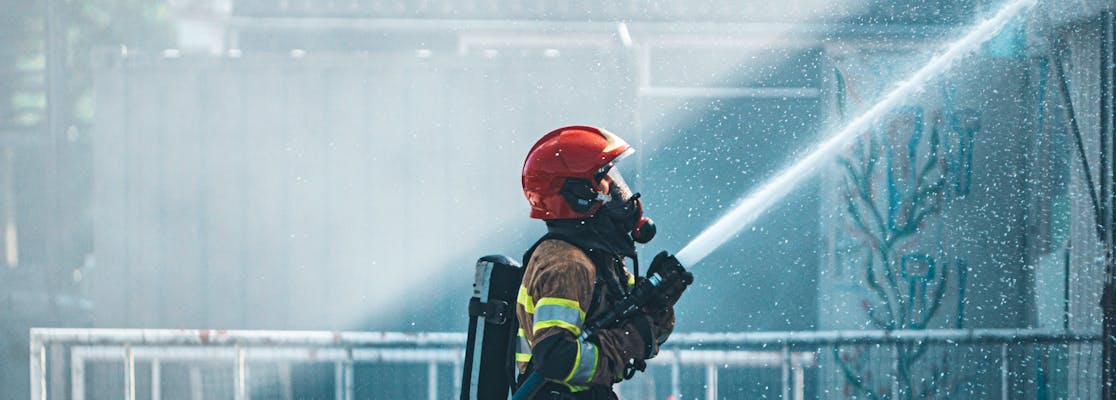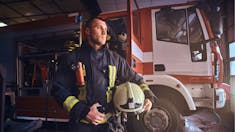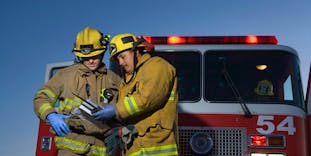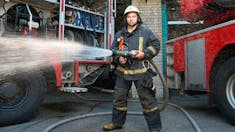A Full Guide to Help You Ace Your FCTC Written Test
Updated November 5, 2024
- What Is the FCTC Written Test?
- Careers Advice for the Firefighter Role Before Taking the FCTC Written Test
empty
- FCTC Written Test Practice Questions
empty
empty
empty
- Information About the FCTC Written Test
empty
empty
empty
empty
- FCTC Written Test Study Guide
- Scoring on the FCTC Written Test
- What Are the FCTC Prep Classes?
- Frequently Asked Questions
- Final Thoughts
What Is the FCTC Written Test?
The FCTC Written Test is a part of the entrance requirements for firefighters in California, and candidates who are looking to have a career with one of the 160+ fire agencies in California will need to pass both the Written Test and the Candidate Physical Ability Test (CPAT).
The Firefighter Candidate Testing Center (FCTC) is owned and operated by the California Firefighter Joint Recruitment Apprenticeship Committee, which takes more than 30 years of experience in recruiting and training to create highly qualified, diverse and well-trained firefighters.
The FCTC Written Test is an assessment that is evaluating the candidates in their ability to process information and think critically, using multiple-choice questions in a timed examination.
The FCTC test assesses various aspects related to firefighting, including:
- Reading Comprehension – Candidates are tested on their ability to understand written information related to firefighting procedures, protocols and safety guidelines.
- Mathematics – This section evaluates candidates' mathematical skills, including basic arithmetic, fractions, decimals and percentages. These skills are essential for performing calculations related to firefighting tasks.
- Mechanical Aptitude – Candidates are tested on their understanding of mechanical principles and concepts. This section assesses their ability to analyze mechanical situations and make appropriate decisions.
- Visualization – This section evaluates candidates' spatial awareness and ability to mentally manipulate objects in three-dimensional space. It assesses their capacity to understand and apply concepts related to fire behavior, equipment placement and building layouts.
The test itself is designed to be challenging – but it is a general knowledge test that looks at specific skills and areas of aptitude that a firefighter will need to use in the role, from mathematical ability to mechanical understanding, as well as excellent recall skills.
Assessments take place at firefighting training locations across California; this is not an assessment that can be taken online.
You will need to register (and pay) for each part of the exams that you take, and when you pass you will be placed on the Statewide Eligibility List (SEL), which is where the fire agencies who are hiring will be looking for new recruits.
To get on the SEL, you need to pass both the Written Test and the CPAT.
Take a Practice FCTC Test on JobTestPrep
Careers Advice for the Firefighter Role Before Taking the FCTC Written Test
Before you start applying for roles as a firefighter, it is important to be prepared for what is to come.
Many people consider being a firefighter to be a calling, rather than just a job, and that can mean dedicated study and preparation.
Firefighters need at least a high school diploma or GED to be placed on the SEL, regardless of their performance in the Written Test and CPAT.
There are other areas of knowledge that will be helpful for a firefighter; not just to help answer the questions on the FCTC Written Test but also to help them complete their day-to-day activities when they are in the role.
Firefighters need to have a good understanding of things like chemistry, biology, and mathematics, as well as a thorough knowledge of the way mechanical principles work.
Environmental ecology knowledge is also essential, especially when dealing with chemicals and other hazardous materials.
For some firefighter roles, other qualifications might be needed. The most commonly found extra qualifications are EMT and Paramedic licenses, which can be acquired separately.
The CPAT
Being a firefighter is a physical role, and to assess candidates for their suitability, the Candidate Physical Ability Test (CPAT) creates an assessment that allows each candidate to demonstrate that they can handle the physical demands of the role.
There are eight tasks that need to be completed in this part of the assessment, and each are based on the typical activities that a firefighter might come across in their role. These are:
- Stair Climb
- Hose Drag
- Equipment Carry
- Ladder Raise and Extension
- Forcible Entry
- Search
- Rescue Drag
- Ceiling Breach and Pull
The candidate must complete each of these activities within the time limit of 10 minutes and 20 seconds.
If they fail any activity, they will fail the whole test.
FCTC Written Test Practice Questions
Recall and Comprehend Technical Information from Written Materials
Read the below technical information and answer the question that follows:
Firefighters are required to understand some basic concepts of ecology when they are working in open spaces and in enclosed spaces too.
There are certain chemicals that are used in firefighting scenarios that can have long-term negative effects on the local and wider ecology, so all crew members are responsible for ensuring that they are working with environmental issues in mind, even when under pressure to deal with an emergency situation. Some of the ecologically dangerous chemicals that can be found in firefighting apparatus includes Aqueous Film Forming Foam (AFFF).
This is usually used to fight liquid-based fires. AFFF contains PFAs, which are toxic chemicals that have a negative impact on human (and wildlife) health. The chemicals do not break down in the environment or in waterways – and this is why many state departments have banned use of AFFF in firefighting situations.
What type of fires is AFFF used to fight?
a) Wood
b) House
c) Liquid
d) Gas
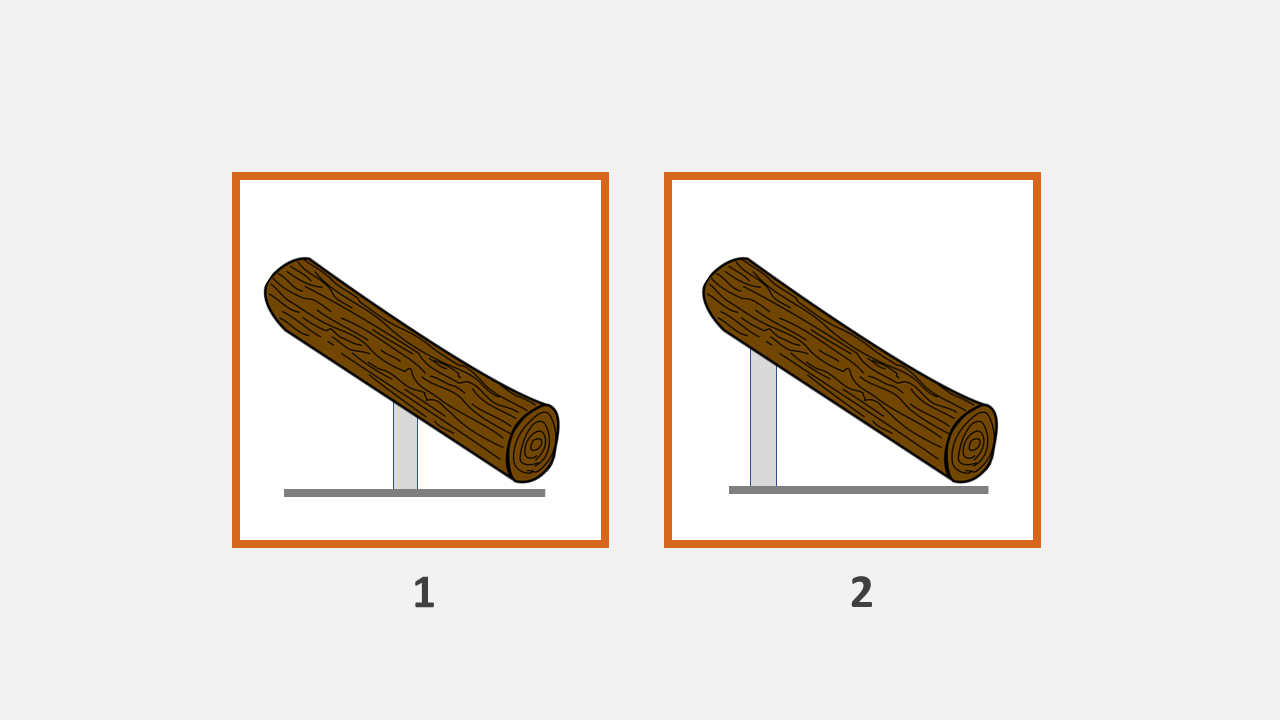
In the above image, which post is being put under more pressure from holding up the rectangle?
a) 1
b) 2
c) Both the same
You are shopping for some new shirts in the sale. You want to buy two shirts, and the original price per shirt is $40. The sale gives 20% off each shirt.
What is the total price that you will pay?
a) $80
b) $60
c) $64
d) $75
Information About the FCTC Written Test
All testing takes place at a Firefighter Candidate Testing Center, which is usually the training room or area at a local fire station.
You are expected to pay for your testing. Each FCTC Written Test costs $50. The CPAT costs $160 per test.
You need to register and pay for both of these tests online.
When you get to the test room, you will have two and a half hours to complete the assessment.
Recall and Comprehend Verbal Information
At the beginning of the test, you will be given an essay packet. This will contain one to four essays on a variety of subjects, which you will need to read and understand.
You are allowed to mark these essays as you go through them, and you will have 30 minutes to really get the information into your head.
After the 30 minutes is complete, the test proctor will remove the essay packet, and you will not have access to it again in the test. You are not allowed to take notes anywhere except in the essay packet.
What makes this section particularly challenging is that you will not be answering questions on the essay contents until much later in the assessment, which means you have to complete other tasks before recalling the details you’ll need to find the right answers.
Recall and Comprehend Visual Information
This is the next section, and you will be shown two videos which you will need to watch carefully so that you can recall the information that is given to answer some multiple-choice questions.
You are not allowed to make notes during the videos. The videos are usually scenario-based, and you will be expected to answer 10 multiple choice questions about each video, so there are 20 questions in total in this section.
Each video will only be played once.
Once you have completed these questions, you will be asked to open your test booklet and complete the rest of the questions.
This section has 80 questions in total, and 35 of these will be on the essays that you had read at the beginning, as well as some written passages that are included in the answer book.
You will need to recall and use only the information that is given in the essays and the writing; previous knowledge should not be used to answer the questions.
After this, there are two more types of questions that you will need to answer.
Apply Mechanical Reasoning Concepts
The methods and procedures for fighting fires and performing rescues includes a need to know how and when to use different tools and apparatus.
This can include things like hand tools and power tools, as well as specialist equipment.
When you are training to use these mechanical contraptions, you will usually need to understand 2D depictions of 3D objects, and this is where some mechanical reasoning knowledge will help.
This also includes reading instruction manuals, blueprints, and maps.
There are 25 questions in this section of the test.
Solve Mathematical Problems
Although any formulas that you need to know to apply hydraulic principles to a problem are taught to you in training, you will need to have a good grasp of basic mathematics to be a firefighter.
The 20 questions in this section are all set at high school level math.
Each question is phrased as a word problem, and you will be expected to complete basic operations to find the right answer from the multiple-choice options presented.
Some of the concepts you should be aware of include:
- Addition, subtraction, multiplication and division
- Percentages, fractions and decimals
- Area and volume
- Angles
- Ratios
You will not be permitted to use a calculator to solve the math problems in this section of the test.

If you need to prepare for a number of different employment tests and want to outsmart the competition, choose a Premium Membership from JobTestPrep.
You will get access to three PrepPacks of your choice, from a database that covers all the major test providers and employers and tailored profession packs.
FCTC Written Test Study Guide
Step 1. Do FCTC Written Test Practice Questions
One of the hardest things about facing a test is unfamiliarity – not only with the content of the questions, but in the structure, format, and layout of the test itself.
One of the best things that you can do to ensure that you get a good score on the FCTC Written Test is to practice.
You can practice each type of question by looking at verbal reasoning, numerical reasoning, and mechanical reasoning practice tests, or you can use the resources provided by the FCTC in their candidate area.
Use the practice to not only get used to the test environment, but also to highlight whether there are any areas in your knowledge that you need to improve on – and these should be the areas you are revising for the best results.
Step 2. Maintain Your Wellbeing
If you are tired, hungry or thirsty, you are not going to be able to work as well as you are capable.
In the run up to the test, make sure that you are getting an adequate amount of sleep – usual guidelines of between six to eight hours are suggested, as studies have shown that sleeping patterns either side of this can have detrimental effects on cognitive abilities.
You also want to make sure that you are fueling yourself properly too. You will need good brain food and plenty of hydration to perform at your best in the FCTC Written Test, but you will also need to fuel your body for the CPAT as well.
Step 3. Get to the Test Center on Time
The FCTC encourage test takers to arrive at least an hour before the published test start time to allow for registration. You will also need to have signed the electronic waiver before you attend.
The test itself takes two and a half hours, and if you are late you will not be permitted to enter. The doors to the test session will close 15 minutes before the start time and they will not be reopened for any reason.
Give yourself enough time to be there, get registered, and be ready to take the test so that you are not adding any extra stress to the day.
Step 4. Have Everything You Need
At the test center, you will not be allowed to bring anything other than yourself, your ID, and a set of keys.
This means that you will not be allowed to bring a backpack, notepad, books, mobile phone or even a watch into the test center – so make sure you leave these at home.
You will need to bring one form of government issued ID, so either a driving license, a state ID card, or a US passport.
All other materials and equipment are provided by the test center, so you do not need to have anything else with you.
Step 5. Read the Questions Properly
The test does not involve trick questions, but when you are under time pressure you might not want to spend too long reading the questions.
However, sometimes the wording might be confusing, asking you to recall something that was NOT on a list, for example.
Reading the questions thoroughly is the only way to ensure that you get the right answers.
Step 6. Listen to the Instructions
The proctor in the assessment room will give instructions to you at the beginning of the assessment, and it is important you follow them at all times.
This will include things like time warnings.
Pay attention to them because following instructions properly is an important skill for a firefighter.
Step 7. Don’t Use Previous Knowledge
This is particularly relevant for the recall questions – you need to only use the information that has been provided for you.
This includes not using information from previous education or experience.
Treat all the information that you are provided with as correct, as you will be marked on your ability to recall the information you have been given and nothing else.
Step 8. Answer to the Best of Your Ability
Some of the questions might seem a bit broad and generalized, and this can mean that more than one answer might be considered correct.
If in doubt, choose the one that is more generally true, or true most of the time.
Scoring on the FCTC Written Test
Each question in the FCTC Written Test is equally weighted, and you will not be marked down if you get a wrong answer.
The passing score for the FCTC Written Test is 70%, and your score remains valid for one year after completing the assessment.
You can retake the FCTC Written Test as often as you like, but you cannot take it within 30 days of the last one. You will have to pay for every retake. Only your most recent score will be used by the FCTC on the SEL.
Your results will be available within five working days on your FCTC profile, although they are usually available sooner than that.
What Are the FCTC Prep Classes?
The FCTC want you to be successful in your test, and that is why they offer prep classes for the FCTC Written Test so you can get to know more about the test and what to expect.
The prep classes are two hours long, and they take place in person so you can go through some worked sample questions with an FCTC instructor.
You will also be able to get some tips and tricks for taking the assessment, and get your questions about the test answered.
These sessions are chargeable at $25 each, but they are recommended by the FCTC if you want to pass with a higher score.
Similar preparation packages are also on offer for the CPAT too.
Frequently Asked Questions
The FCTC Written Test is an assessment of your critical thinking and information processing skills to see if you are a good candidate for a role as a firefighter.
Passing the FCTC Written Test is a prerequisite to join one of the 160+ fire agencies in California.
The FCTC Written Test is designed to be challenging because it needs to assess specific mental abilities that are needed for success as a firefighter.
The questions themselves might not be too challenging, but the structure of the assessment combined with the time limit and exam conditions make it that much harder.
You can prepare for the FCTC Written Test using the information available at the FCTC candidate website, which includes an entire prep booklet with sample questions and further information.
The resources at JobTestPrep will also help. This could include a full-length FCTC practice test, as well as revision material.
The passing score for the FCTC Written Test is 70%. You will need to score at least 70% to be added to the Selection Eligibility List (SEL), which is where the fire agencies will look for their newest firefighter recruits.
You can increase your chances of scoring a passing grade by taking a FCTC written practice test.
The score you achieve on the FCTC Written Test is good for one year after you complete the test. Only your most recent test results will be used if you take the test more than once.
The best way to pass the FCTC Written Test is to practice with relevant materials. You can use the resources at JobTestPrep to help here; they include full length practice tests, example questions, and revision material.
There is also a wealth of information available at the candidate website of the FCTC too.
You can find sample questions for the FCTC Written Test in the study guide for the test, which can be found on the FCTC candidate website.
There is also extensive information about the test available at JobTestPrep, which includes sample questions as well as practice tests and tips to help you get the best score.
You can retake the FCTC Written Test as many times as you like, but you have to wait at least 30 days from the date of your last test. You will need to apply (and pay) for each new test in the same way as the past one.
You are not permitted to use a calculator on the FCTC Written Test, and in fact you cannot bring any equipment into the test center with you.
The FCTC Written Test is not free; each test costs $50. You may qualify for help with this cost if you are suffering from financial hardship, however.
The FCTC Written Test is designed to assess potential candidates who want to become firefighters in the state of California.
It measures things like reading comprehension, basic mathematical ability, and critical thinking skills, as well as mechanical reasoning knowledge.
You can find a complete guide for the FCTC Written Test at JobTestPrep, which includes detailed information about each section of the test, sample questions with solutions, and full-length practice tests as well as revision materials and tips and tricks.
The FCTC prep booklet is another source of information that you will find useful when you are preparing to take the test.
Final Thoughts
The FCTC Written Test is designed to be challenging so that only those who have the right level of critical thinking and comprehension are able to join the fire agencies in California.
Although the test can be daunting—taking place in a test center and asking a range of questions—with some preparation you can be clear on what you need to know so that you can answer the questions well enough to get the score you need for selection.
Practice makes perfect, and the FCTC Written Test is just one stage in the application process to become a firefighter in California.
